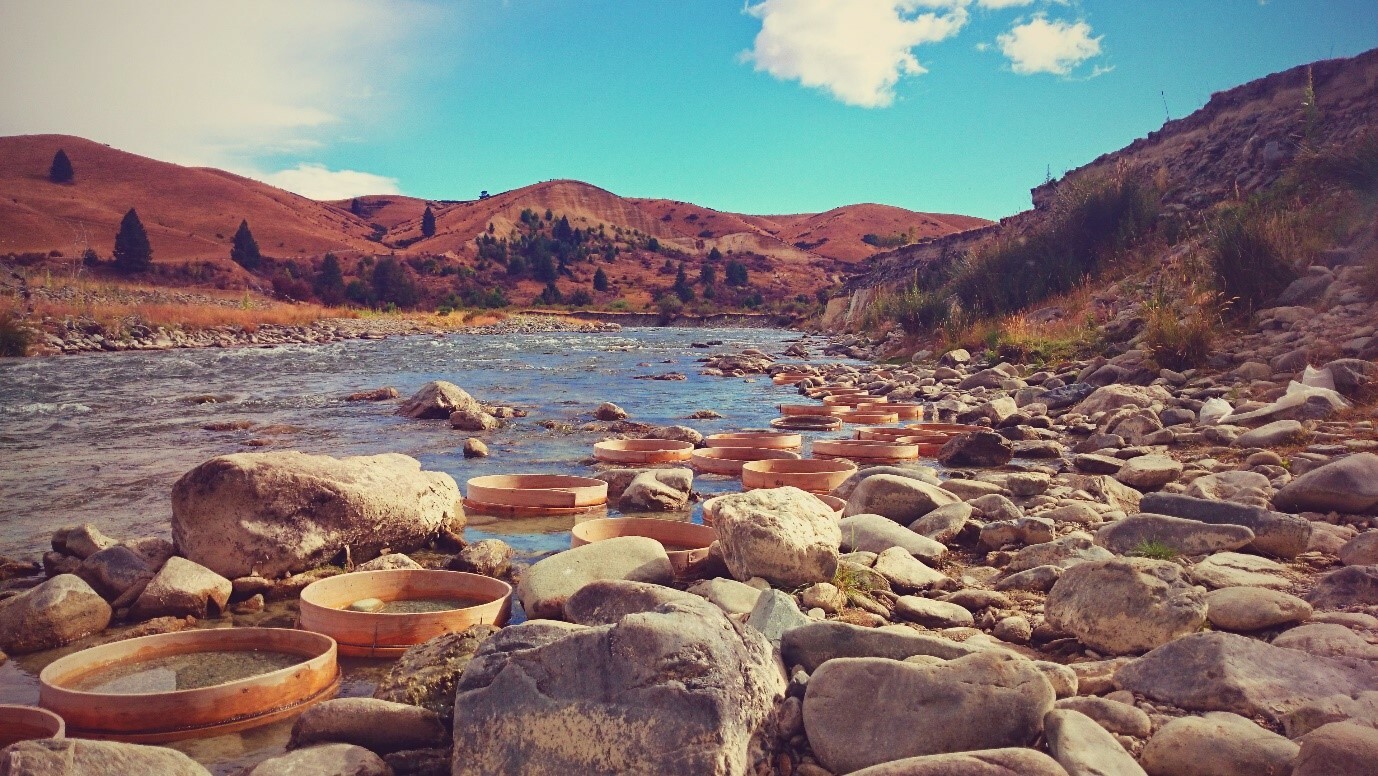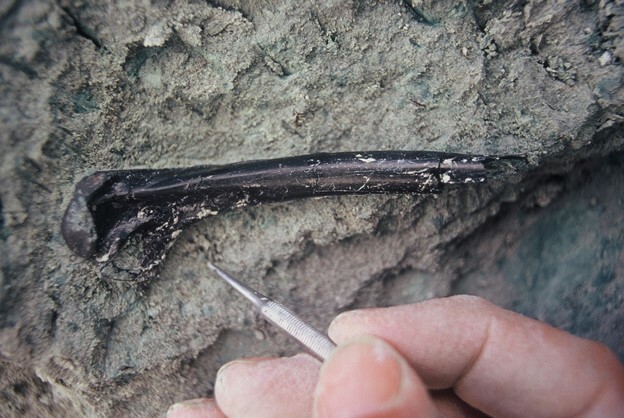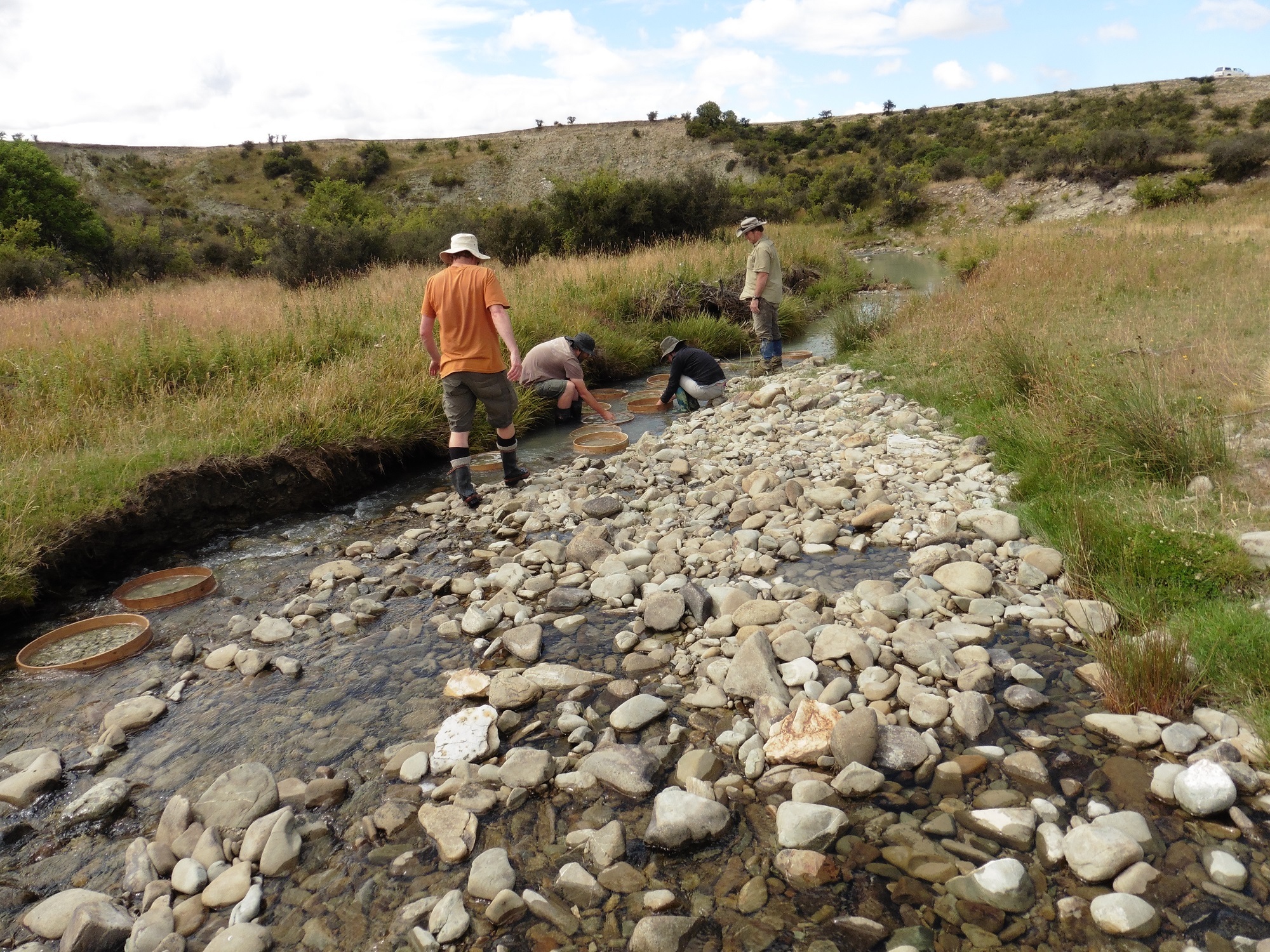Deep in the heart of the Maniototo in Central Otago, between Dunstan Creek to the west and the Manuherikia River to the east, is the small town of St Bathans, a former coal and gold mining town. During the 1860s, St Bathans was at the centre of the Central Otago Gold Rush which attracted thousands of prospectors to the region. Back then the Manuherikia and nearby tributaries were a major source of gold, but today researchers are interested in another kind of treasure found along the banks of these rivers: fossils.
Canterbury Museum's Natural History Research Curator Dr Vanesa De Pietri was part of this year's field trip to the fossil sites of St Bathans.
For 17 consecutive years, Canterbury Museum researchers have joined Australian and New Zealand colleagues on annual trips to fossil sites near St Bathans to recover the remains of birds, bats, reptiles, frogs and fish. So far, about 7,500 specimens have been identified and labelled and many more are still waiting to be processed. The sediments in which the fossils are found are still not well dated, but based on pollen specimens they are considered to be between 19 and 16 million years old. Lake Manuherikia, a 5,600 km2 freshwater lake, almost 10 times the size of Lake Taupo, extended over the area during this period, sustaining a remarkable diversity of animals.

There are several marine fossil sites in New Zealand that have yielded some extraordinary examples of marine vertebrates. However, the fauna found near St Bathans provides the only insight into terrestrial vertebrates living in New Zealand between 65 and 4 million years ago. These fossils tell a story of a time when New Zealand was much warmer than today. The climate was warm-temperate to marginally subtropical. The St Bathans fauna included crocodilians, turtles, lizards, bats and a number of birds that disappeared when New Zealand’s climate began to cool some 15 million years ago. Other iconic birds, such as kiwi, moa and New Zealand wrens survived the change in temperature and are also found in the St Bathans fauna.

Collecting specimens from these sites can be an arduous and time-consuming endeavour. The first step is to locate a layer in which bones have accumulated (the presence of fish bones is usually a giveaway). To collect from the bone-bearing layer, hard labour is often required as these layers can be buried under hundreds of kilograms of rock, soil and plant matter. After the fossiliferous layer is removed, it is washed using sieves to concentrate the fossils. Although many fossils are already evident at this stage, many other treasures are only revealed once the sediment is carefully examined under a microscope.

The majority of the specimens are processed at Flinders University, South Australia under the supervision of New Zealand expatriate Dr Trevor Worthy who led the team’s first expedition in 2001. The specimens are then deposited at Canterbury Museum and the Museum of New Zealand Te Papa Tongarewa, where they are an important part of their research programmes.

The work undertaken at the St Bathans sites is only possible with the permission of the landowners of Home Hills and Dunstanburn Stations. This year’s expedition included myself and Canterbury Museum Senior Curator Natural History Dr Paul Scofield, Dr Trevor Worthy from Flinders University, Alan Tennyson from Te Papa, fossil hunter and preparator Al Mannering and Otago University graduate Marcus Richards.
Over 10 days we targeted the usual sites. We were very pleased on the last day to discover a new site with very dense concentrations of bones. Hopefully in the near future we will know more about what lies beneath this previously unexplored site.
The St Bathans project is now also part of a Royal Society Marsden grant recently awarded to myself and Dr Scofield to investigate the evolution of the ecological adaptations of shorebirds which are also found at St Bathans.






